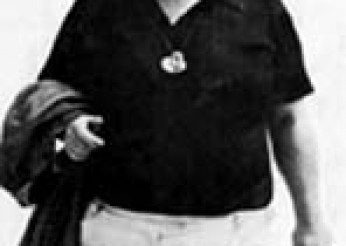Norms, middle-class, religion – worlds of Marco Ferreri’s films
Marco Ferreri should have been a veterinarian. That was what he studied but
never finished. At the age of 22 he started working on film as production
manager and producer. In 1950 he founded Film Monthly (Documento mensile)
with Ricardo Ghone. Although it had only two issues, and those were screened
very rarely, his helpers were some of the most famous Italian directors, writers
and screenplay writers: Visconti, Fellini, Moravia, De Sica, Zavattini, etc. His
qualities as manager and producer proved to be very valuable in the film-omnibus
Love in the City (Amore in Citta, 1952),the film that Carlo Lizzani in
his history of Italian cinema labels as ‘one of the most important experiments
of pure neorealism’. Film is an actual survey shot under the supervision of
Cesare Zavattini. Through different episodes it speaks of different aspects of
love, emotional and erotic life in a contemporary metropolis. Ferreri as
producer and organizer cooperated again with many great directors such as
Antonioni, Fellini, Lattuada, Lizzani, Risi, and Maselli.
With experience Ferreri acquired knowledge and skill. Working with great Italian
authors he came to an understanding of film as a medium through which one can
express one’s beliefs. He also came to realize that focusing on one idea or
thesis does not necessarily result in a lousy film, although all the elements
are subordinated to expressing a single attitude.
The thematic range of his films in its widest sense encompasses the relationship
of an individual towards other individuals and society on all levels: he deals
with (sexual) identity as in Bye Bye Monkey (Ciao Maschio, 1978), with
male-female relations in The Conjugal Bed (Una storia moderna: l’ape
regina, 1963), where he openly ridicules marital relations of an utterly
inferior man and his wife. He goes on to mock social institutions such as the
wedding and marriage itself. In the film The Wedding March (Marcia
nuziale, 1966) we follow elaborate wedding preparations only to finally
attend to the wedding of house pets of two wealthy families. Ferreri, however,
was conscious of his cinema heritage and the quality of those films. He also
understood that the ideas of neorealists such as Vittorio de Sica were outdated.
A year before Love in the City (1952) Vittorio de Sica shot one of the
best and most critical neorealist films Umberto D. Poor De Sica’s retiree
is a lonely man who lives in a rented house with a small dog. Unable to rebel
against life, he follows his path with his only friend towards a bitter, short
future.
Ferreri’s old man from the Wheelchair (El cochesito, 1958) is the
antithesis to De Sica’s. The old devil would kill most of his family to get the
wheelchair that would enable him to socialize with his neighbours. The ending,
of course, is rather bizarre much in Ferreri’s style: screaming police cars
surround the old man and take him to prison.
Ferreri’s solutions are always quite drastic, and viewers often have difficulty
digesting them: one of his characters cuts off his penis with an electric knife,
while Ornella Mutti ‘closes’ her vagina with a safety pin in Tales of
Ordinary Madness (1981). For Ferreri this signals disorientation and loss of
identity. Physical mutilation often serves as foreplay to bizarre suicides, as
was the case with the most bizarre suicide attempts in European film La
Grande Bouffe, 1973. Four friends bring themselves to the brink of death,
stuffing themselves with foods of all sorts and shapes. Gluttony is definitely a
deadly sin, but committing suicide by gluttony is certainly even worse. The
punishment must be much more severe.
Sex, violence, tradition, norms, bourgeois attitudes, and religion dominate the
worlds of Marco Ferreri’s films. Everything is drastic. Nothing is hidden and
all is heading towards a global genocid, as in Don’t Touch the White Woman!
(Touchez pas la femme blanche, 1975), with Marcello Mastroianni. Mastroianni
plays a longhaired Buffalo Bill at the parking lot of the Paris Les Halles who
is attempting to deport old Parisian ‘Indians’ from the spleen of Paris in order
to build an ultra-modern polyvalent building. This happens before they kill his
fiancée – Catherine Deneuve. Silly Pinkerton agents conduct a phoney
investigation of his building permits, in the name of the opposition, of course.
It is no wonder that Marco Ferreri often had problems with censorship.(Dario
Marković)
Marco Ferreri’s film program
